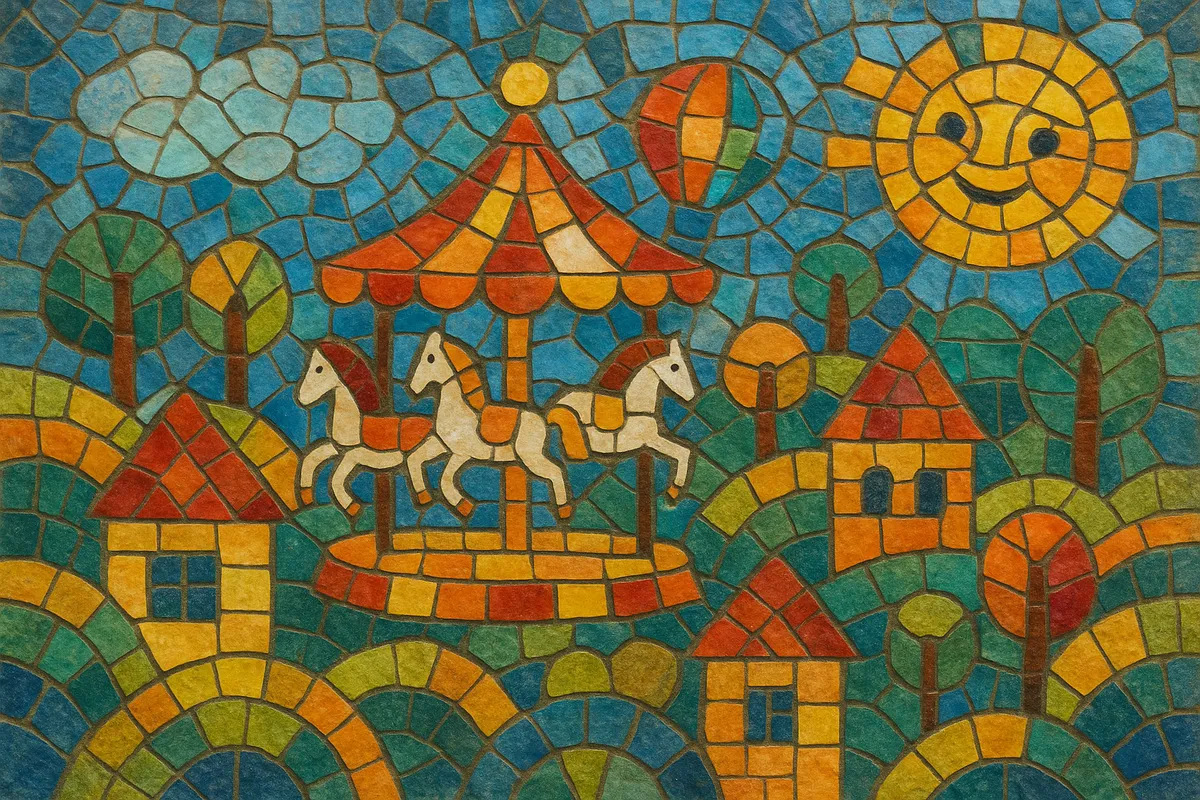
Toytown pop (sometimes called "toytown psych") is a whimsical, childlike offshoot of late‑1960s British psychedelic pop.
It mixes bright, sing‑song melodies and music‑hall bounce with storybook lyrics, sound effects, and colorful orchestration. Songs often feel like miniature cartoons or nursery rhymes brought to life, featuring harpsichord, Mellotron, woodwinds, brass, glockenspiel, toy pianos, and fairground organs.
Harmonically it leans on diatonic, major‑key writing with quick key lifts and baroque‑pop touches, while production embraces psychedelic tricks such as tape varispeed, ADT, flanging, and collage‑style interludes. The overall effect is playful, nostalgic, and vividly cinematic—psychedelia viewed through a child’s kaleidoscope.
Toytown pop emerged in mid‑to‑late 1960s Britain as psychedelic pop absorbed the cheeky humor and theatrical flair of Victorian/Edwardian music hall. The Beatles’ mid‑’60s experiments and the broader UK psych scene opened the door to whimsical narratives, cartoonish characters, and story‑song structures.
The style crystallized around 1967–1968, when singles blended baroque‑pop arranging with nursery‑rhyme hooks and technicolor studio effects. Exemplars include Small Faces’ "Lazy Sunday," Pink Floyd (Syd Barrett era) with "Bike" and "The Gnome," The Kinks’ "Phenomenal Cat," The Move’s "Flowers in the Rain," Nirvana (UK)’s "Rainbow Chaser," The Idle Race’s "Skeleton and the Roundabout," Mark Wirtz/Keith West’s "Excerpt from ‘A Teenage Opera’," Kaleidoscope (UK)’s "Jenny Artichoke," and World of Oz’s "The Muffin Man." These tracks captured the carefree, storybook angle of psychedelia while staying radio‑friendly and compact.
As the psychedelic era waned, toytown’s overt childlike eccentricity gave way to singer‑songwriter and progressive currents. However, its melodic sensibility and orchestrated, music‑hall DNA lingered in UK pop craftsmanship and occasional novelty or children’s releases.
From the ’80s onward, neo‑psychedelia, indie pop, chamber pop, twee pop, Shibuya‑kei, and later Britpop revived or referenced toytown’s bright harmonies, ornate arrangements, and wry observational lyrics. The genre’s emphasis on tunefulness, character vignettes, and whimsical studio color remains a touchstone for artists seeking a playful, nostalgic twist on classic pop forms.
-
•
Write a simple major‑key tune with a nursery‑rhyme hook.
•Add a quirky character lyric and a key‑lift before the last chorus.
•Arrange with harpsichord/Mellotron and toy‑bright percussion.
•Sprinkle tasteful SFX and a brief orchestral flourish.
•Double the lead vocal and stack a cheerful gang chorus for the finale.

